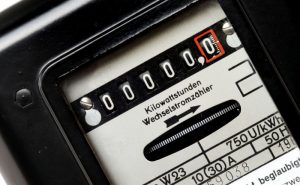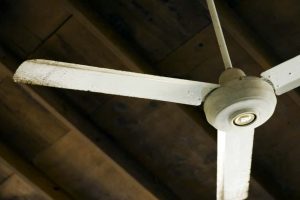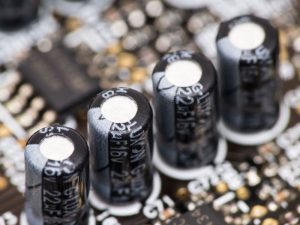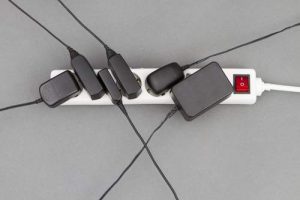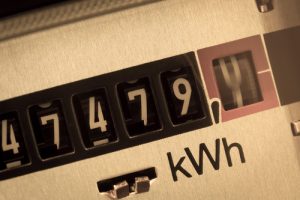Energy Star Qualified Laptops and Desktops; and their electricity consumption comparison
We may talk about energy efficiency, we may research about latest trends in non-conventional energy sources, we may even implement these ideas based on our Google research. Bijli Bachao is one such effort to provide information in this field and we thank our readers for their support that encourages us to continue our efforts. But, one question we would like to ask is that how many of us have given a thought to the fact that the device through which we Google and through which we research online, is it itself energy efficient? Yes, we are talking about our computers. And we will be talking about Energy Star Computers.
What is Energy Star?
With an intention to promote energy efficiency and reduce greenhouse gas emissions, the US Environmental Protection agency (EPA) introduced ‘Energy Star’ as a voluntary labeling program to design and identify such energy efficient products. It started with computers and monitors, and now has a range of products under its belt. The way we have different star ratings with BEE star label, ‘Energy Star’ has different versions, which define the criteria to be met by the products to be Energy Star qualified. So what is the advantage of owning a Energy star qualified computer?
Why Energy Star qualified computers?
Let us analyze that why Energy Star computers are advantageous as compared to conventional computers.
Energy Star computers are 30-70% more efficient as compared to equivalent non-energy star computers.
1. Operational mode efficiency
It is said that a computer is active around 35% of the time, whereas the rest 65% of the time is idle. In idle mode, a basic conventional desktop may consume around 50 watts and a multiple core desktop with dedicated graphics may consume up to 95 watts. Basically, 50-95 watts are spent for doing nothing. To avoid this, Energy Star qualified computers have a power management feature inbuilt (we shall discuss this in detail in our subsequent articles). This puts the computer in sleep/standby/ idle mode after a certain period of inactivity. Energy star qualified desktops have a limitation to consume maximum of only 2 watts while in sleep mode and only 4 watts in standby mode. Whereas, the limitation for Energy Star notebooks is 1 watt for standby, 1.7 watts for sleep and either 14 or 22 watts for idle mode of operation. Thus, you can reduce the power that is wasted.
2. Power Supply Efficiency
Since the internal components in a computer work on lower voltages (5V, 12V etc), we require power supplies to convert the 120/240/415 V mains supply to these low voltage levels. In this process of conversion, some energy is wasted as heat. More the loss of energy as heat, less efficient is the power supply and vice versa. For example, a power supply that converts 100 watts of incoming mains power to 40 watts of power for internal components is 40% efficient. The rest 60 watts are wasted as heat. To ensure that such wastage is minimized, Energy Star qualification requires that the internal and external power supplies of the computers have to be at least 80% efficient. In short, Energy star computers have efficient power supplies (minimum 80% efficiency), which dissipate less heat.
3. Typical Energy consumption (TEC)
In order to compare the energy requirements of various computers based on normal operation, we take into account the amount of electricity (kWh) consumed by them annually. Thus, we determine TEC of computers by taking into account the power (P)consumed by them in different modes and the amount of time (T as % of year, eg. 20%,50% ) spent in that mode. Energy star gives the following formula to determine TEC of computers:
TEC= (8760/1000)*(Poff*Toff + Psleep*Tsleep + Pidle*Tidle)
Energy star qualified computers consume 30%-70% less electricity as compared to conventional computers of same configuration.
Based on TEC, Energy Star qualified computers are categorized as follows:
| Category | TEC (kWh) for desktops and integrated computers | TEC (kWh) for Notebooks |
| A | <= 148.0 | <= 40.0 |
| B | <= 175.0 | <= 53.0 |
| C | <= 209.0 | <= 88.5 |
| D | <= 234.0 |
The values takes for above results are:
Toff= 55% Tsleep= 5% Tidle= 40%
Kindly note that these values also depend and vary with graphics capability, system memory etc.
4. Room cooling load
Since, Energy Star computers consume less power and are more efficient, they remain comparatively cooler than conventional computers, thus reducing the need for air conditioning. Though this may seem insignificant, but if you consider a large number of computers, this factor will have a major role to play, since it may not only conserve computer based power but also air conditioning based power.
Watts with the ‘mode’?
Now that we know that ‘Energy star’ computers have the capability to enter different operational modes based on the requirement and power management feature, let us understand what these modes are.
1. Off mode: Frankly, while finding information on this topic, it was surprising to know that equipment consume power even when they are switched off, as long as they are plugged in into the socket. This is different from the stand-by power. Thus, the computer that is switched off but not unplugged is said to be in Off mode. Though this
Power is negligible (few hundred milliwatts), but unplugging the device can surely save this too.
2. Sleep mode: When the computers notices a certain period of inactivity, it enters into ‘sleep mode’ where it consumes lesser power than in normal active or idle mode. The user can also do this manually to save power when the computer is running but not being used. The computer can leave sleep mode and resume normal operation in less than 5 seconds on wake event initiation, eg. moving the mouse, pressing a key on keyboard.
3. Idle mode
Basically, this is the mode where computer consumers its full rated power and yet it not used to perform any task by the user or the network. Thus, larger the time a computer spends in idle mode, greater is the wastage of power.
4. Active mode
As the name suggests, this is the mode where the user or the network uses the computer to perform various tasks, and the computer consumes it full rated power.
How to determine if a computer is Energy Star qualified?
Every Energy Star qualified computer will have a blue colored Energy Star logo on it. Monitors/ Screens will display this logo to confirm that they are energy star qualified. We at Bijli Bachao have tried to enlist maximum Energy Star qualified notebooks and desktops that are available in India. You may find the excel sheet comparing various brands and models for the same here.
Desktops:
link: http://bit.ly/1rJ3RhV
Notebooks:
link: http://bit.ly/1nZ7P3O
We have tried our best to mention most of the models here. Readers should kindly note that there may be more models that may be Energy Star qualified. Kindly verify with the vendor before you purchase the same. Also, the comparison is based on the data and configuration mentioned in the excel sheet. The power consumption of the computers will vary with different configurations.
Watt is the tip??
- Purchasing Energy Star computers can save 30-70% electricity as compared to conventional computers based on the usage.
- Enabling Power Management features (such as sleep mode etc) can help reduce significant amount of energy wastage.
- Screen-savers don’t save energy. They are just used to prevent hotspots on the screen. Hence, prefer sleep mode rather than using screensavers. In fact sometimes, screensavers prevent the computer from entering sleep mode.
- Though sleep mode saves power, it is better to turn off the computer when not required. This will save more power. And unplugging it, will save an extra milli-watt.
- Laptops consume less than half power as compared to desktops.
About the Author:
Abhishek Jain is an Alumnus of IIT Bombay with almost 10 years of experience in corporate before starting Bijli Bachao in 2012. His passion for solving problems moved him towards Energy Sector and he is keen to learn about customer behavior towards Energy and find ways to influence the same towards Sustainability. More from this author.

